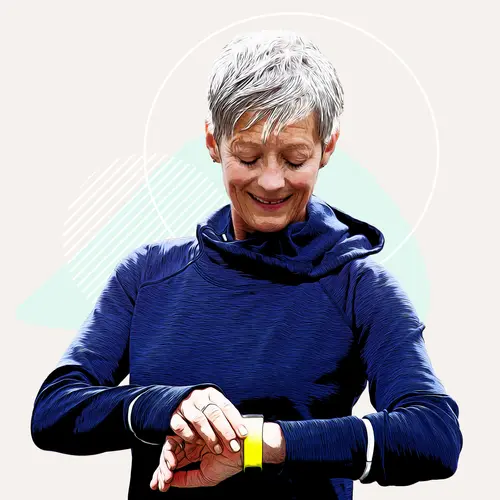April 3, 2000 -- (Great Falls, Mont.) -- A mammogram revealed a small cancerous tumor in Opal Addison's breast, and she opted for a lumpectomy. When her oncologist recommended that she enroll in a clinical trial of an experimental drug to prevent further cancer, Addison (not her real name) readily agreed. She did it to help herself and possibly others. ''If I was 21, I probably wouldn't do it,'' says the 70-year-old Illinois woman. ''But now, if I can help anybody, I'm glad to.''
Now completing the first year of the five-year study, she takes a daily pill, visits her doctor for blood tests every three months, and has a mammogram every six. So far, she's been free of side effects such as nausea or night sweats, which she says would have to be ''pretty severe before I would drop out."
Older volunteers can help increase overall knowledge about the effectiveness of cancer drugs. But patients older than 65 are woefully underrepresented in cancer treatment trials, according to a study published in the December 30, 1999 issue of the New England Journal of Medicine.
The Scope of the Problem
Oncologist Laura Hutchins, M.D., of the University of Arkansas for Medical Sciences in Little Rock, led the study that looked at 16,396 patients enrolled in 164 cancer treatment trials. Only 25% were older than 65, even though 63% of all cancer patients are in that group. When it comes to breast cancer in particular, only 9% of the patients in clinical trials were past 65 -- though half of all cancer cases occur in women that age and older.
Complicating the issue, health experts predict a "pandemic'' of cancer as baby boomers age. ''When that happens, we're going to be totally unprepared for dealing with cancer in the elderly," says medical oncologist Charles Coltman, MD, of the University of Texas Health Science Center in San Antonio, and another study co-author.
It's not enough, experts say, to study cancer treatment drugs in the young. Aging immune systems and organs affect the way drugs are absorbed and eliminated. Many elderly patients already take medications for diseases such as high blood pressure that could interfere with the needed new treatments. And sometimes cancers run a different course in elderly patients.
Why the Lack of Seniors?
Many seniors may miss out on clinical trials because their oncologists are simply reluctant to refer them. A study published in the Journal of Clinical Oncology in 1991 found that 80% of oncologists surveyed thought that patients have better outcomes when they get clinical trial treatments, but half added that they had sometimes declared patients unsuitable for the trials on the basis of age alone.
Economics may also play a role. The rules about Medicare reimbursement for patients participating in clinical trials are ambiguous, according to a recent report from the federal Institute of Medicine. The institute recently urged the Health Care Financing Administration, which administers Medicare, to issue clear rules on reimbursement for participation in trials.
Because clinical trials require additional medical visits, lack of transportation, or its cost, may be another obstacle.
Looking for Solutions
A variety of approaches -- such as paid advertisements to seek seniors, and clearer Medicare rules -- will probably be needed to draw more older patients to clinical trials, says Hutchins. For now, the scarcity of elderly patients in cancer treatment trials is reminiscent of the former under-representation of women and African-Americans in clinical trials. In the late 1980s and early 1990s, federal agencies established requirements that women and minorities must be adequately represented in clinical trials of cancer treatments.
A Senior's Story
Despite these obstacles, Ted Simms, like Opal Addison, did get into a trial, and he's glad he did. And that's another argument for including more seniors in clinical trials: Doing so can offer measurable benefits to the participants themselves. Four years ago, Simms (not his real name), at the age of 73, found a lump in a lymph node that turned out to be cancerous. Three weeks later, the Texas resident started receiving intravenous taxol every 21 days as part of a 6-month clinical trial.
He bore the cost of traveling 150 miles and staying in a motel the night before each treatment. The drug caused mouth blisters, weight loss, and sapped his energy. His fingertips and feet still feel numb from the treatment -- but the cancer is gone. "I was a guinea pig," he admits, "but I didn't mind. It was the best option available.''
Carol Potera is a journalist from Great Falls, Mont., who writes for WebMD, Shape magazine, and other publications.

